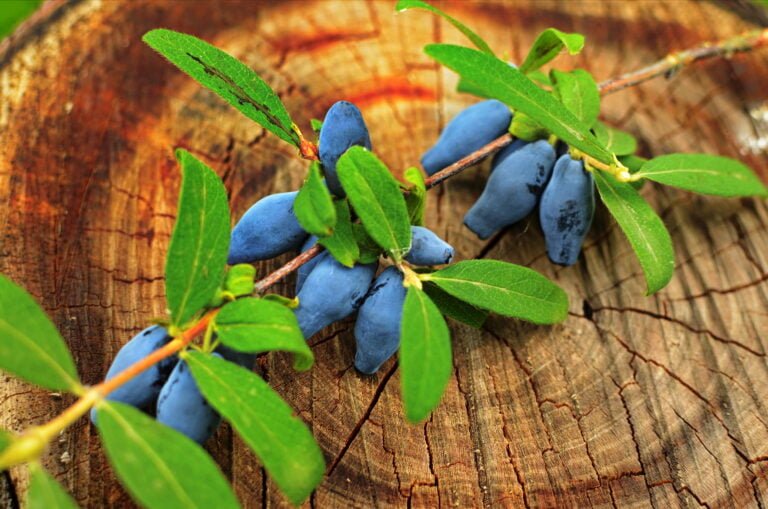Small oval berry compared to blueberry because of the colour of its skin, haskap has a purple pulpit and a juice of burgundy colour. Its unique and complex taste is associated with blackcurrants, blueberries and raspberries.Harvested at the beginning of summer, this small fruit allows agricultural businesses to better distribute the workload and sources of income. Rich in antioxidants, fibers and vitamins, haskap is not very sensitive to attacks and diseases. It is therefore possible to make it an organic crop or without chemical additions.
Normally, the first commercial harvest of haskap takes place three or four years after the planting of the haskap trees, although they will begin to produce some fruits in the first years. The haskap is ready for harvest when its skin is completely blue and the interior is burgundy. If the interior is still green, we have to wait some time. Harvesting takes place six to eight weeks after the flowering period and the fruit can remain on the shrub for a few weeks.Consumed fresh or primed in the form of processed products, the haskap is highly perishable. It must be frozen or stored in a cold room as soon as it is harvested and without any additional manipulation. After being cooled, the haskap can be processed or transferred to another container within two to four days of harvest.


